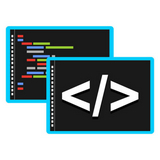
本文深入探讨了Go语言中Goroutine的取消机制,强调Go不提供强制终止Goroutine的能力,而是提倡通过协作式方式进行。文章详细介绍了如何利用time.NewTimer优化超时处理,以及更通用的context.Context包实现Goroutine的优雅取消,避免资源泄露,确保并发程序的健壮性。
在Go语言的并发模型中,Goroutine是轻量级的执行单元。开发者在处理并发任务时,经常会遇到需要“终止”或“取消”一个正在运行的Goroutine的场景,例如当一个操作超时、用户取消或程序需要关闭时。然而,Go语言的设计哲学并不支持强制终止其他Goroutine,而是鼓励通过协作机制实现优雅的退出。
Go语言没有提供类似其他语言中线程的stop()方法来强制终止一个Goroutine。这种设计是为了避免因突然终止而导致的数据不一致、资源泄露或死锁等复杂问题。相反,Go推崇的是“协作式取消”:一个Goroutine应该主动检查取消信号,并根据信号自行决定何时以及如何安全退出。
虽然存在runtime.Goexit()函数,它允许当前Goroutine立即退出,但它仅作用于调用自身的Goroutine,不能用于停止其他Goroutine。因此,当我们需要控制其他Goroutine的生命周期时,必须依赖通信机制。
在处理超时场景时,time.After是一个常用的便捷函数。它返回一个<-chan Time,在指定持续时间后会发送当前时间。考虑以下示例:
func WaitForStringOrTimeout() (string, error) {
myChannel := make(chan string)
go func() {
// 模拟一个可能长时间阻塞的操作
// WaitForString(myChannel)
time.Sleep(20 * time.Minute) // 假设这里是实际的阻塞操作
myChannel <- "found string"
}()
select {
case foundString := <-myChannel:
return foundString, nil
case <-time.After(15 * time.Minute):
return "", errors.New("Timed out waiting for string")
}
}在这个例子中,如果myChannel迅速接收到数据,time.After创建的定时器是否还会继续运行15分钟?答案是,虽然time模块的定时器由运行时集中管理,不会为每个time.After调用都启动一个独立的Goroutine,但time.After返回的通道以及相关的内部簿记结构会一直存活,直到定时器触发或程序退出。这意味着即使超时操作提前结束,这些资源也会被占用15分钟。
为了更有效地管理资源,尤其是在可能提前取消的场景中,推荐使用time.NewTimer。time.NewTimer返回一个*Timer对象,该对象包含一个通道C,以及Stop()方法用于取消定时器。
以下是使用time.NewTimer改进后的代码:
import (
"errors"
"fmt"
"time"
)
func WaitForStringOrTimeoutOptimized() (string, error) {
myChannel := make(chan string)
go func() {
// 模拟一个可能长时间阻塞的操作
// WaitForString(myChannel)
time.Sleep(20 * time.Minute) // 假设这里是实际的阻塞操作
myChannel <- "found string"
}()
timer := time.NewTimer(15 * time.Minute)
defer timer.Stop() // 确保在函数返回前停止定时器,释放资源
select {
case foundString := <-myChannel:
return foundString, nil
case <-timer.C: // 从timer.C接收超时信号
return "", errors.New("Timed out waiting for string")
}
}
func main() {
// 示例调用
// result, err := WaitForStringOrTimeoutOptimized()
// if err != nil {
// fmt.Println("Error:", err)
// } else {
// fmt.Println("Result:", result)
// }
}通过defer timer.Stop(),我们确保了无论select哪个分支被选中,定时器都会被停止并释放其内部资源。这比time.After更高效,尤其是在大量短时操作中。
对于更复杂的Goroutine取消场景,特别是当一个Goroutine内部有多个操作或需要将取消信号传递给更深层次的函数时,context.Context包是Go语言中标准的解决方案。context.Context提供了一种携带截止时间、取消信号和其他请求范围值的方式,并能跨API边界和Goroutine传递。
核心思想是:父Goroutine创建一个带有取消功能的Context,并将其传递给子Goroutine。子Goroutine周期性地检查Context的取消信号,一旦接收到信号,就优雅地退出。
import (
"context"
"fmt"
"time"
)
// Worker simulates a long-running task that respects cancellation.
func Worker(ctx context.Context, id int) {
fmt.Printf("Worker %d started\n", id)
for {
select {
case <-ctx.Done(): // 检查取消信号
fmt.Printf("Worker %d received cancellation signal. Exiting.\n", id)
return
case <-time.After(1 * time.Second): // 模拟工作负载
fmt.Printf("Worker %d working...\n", id)
}
}
}
func main() {
// 创建一个可取消的上下文
ctx, cancel := context.WithCancel(context.Background())
// 启动一个Worker Goroutine
go Worker(ctx, 1)
// 让Worker运行一段时间
time.Sleep(3 * time.Second)
// 发送取消信号
fmt.Println("Main: Sending cancellation signal...")
cancel() // 调用cancel函数会关闭ctx.Done()通道
// 等待Worker退出
time.Sleep(1 * time.Second)
fmt.Println("Main: Program finished.")
}在这个例子中,Worker Goroutine会周期性地检查ctx.Done()通道。当main Goroutine调用cancel()函数时,ctx.Done()通道会被关闭,Worker Goroutine的select语句会捕获到这个信号,从而执行清理并退出。
context.WithTimeout是context.WithCancel的一个特例,它会在指定时间后自动触发取消。
import (
"context"
"fmt"
"time"
)
// FetchData simulates fetching data from a remote service with a context.
func FetchData(ctx context.Context) (string, error) {
select {
case <-time.After(2 * time.Second): // 模拟数据获取时间
return "Data fetched successfully", nil
case <-ctx.Done(): // 检查上下文是否被取消或超时
return "", ctx.Err() // 返回上下文的错误(如context.DeadlineExceeded)
}
}
func main() {
// 创建一个带有5秒超时的上下文
ctx, cancel := context.WithTimeout(context.Background(), 5*time.Second)
defer cancel() // 最佳实践:即使超时,也要调用cancel()以释放资源
fmt.Println("Main: Starting data fetch with 5s timeout...")
data, err := FetchData(ctx)
if err != nil {
fmt.Printf("Main: Error fetching data: %v\n", err)
} else {
fmt.Printf("Main: Data: %s\n", data)
}
// 模拟一个更短的超时,导致FetchData超时
ctx2, cancel2 := context.WithTimeout(context.Background(), 1*time.Second)
defer cancel2()
fmt.Println("\nMain: Starting data fetch with 1s timeout...")
data2, err2 := FetchData(ctx2)
if err2 != nil {
fmt.Printf("Main: Error fetching data: %v\n", err2)
} else {
fmt.Printf("Main: Data: %s\n", data2)
}
}在FetchData函数中,它既监听自己的模拟数据获取完成信号,也监听ctx.Done()。如果ctx.Done()通道在数据获取完成前关闭(因为超时),FetchData会立即返回ctx.Err(),通常是context.DeadlineExceeded错误。
通过遵循这些原则和使用Go语言提供的工具,开发者可以构建出更加健壮、资源高效且易于维护的并发应用程序。
以上就是Go并发编程:优雅地取消Goroutine与超时处理的详细内容,更多请关注php中文网其它相关文章!

编程怎么学习?编程怎么入门?编程在哪学?编程怎么学才快?不用担心,这里为大家提供了编程速学教程(入门课程),有需要的小伙伴保存下载就能学习啦!

Copyright 2014-2025 https://www.php.cn/ All Rights Reserved | php.cn | 湘ICP备2023035733号